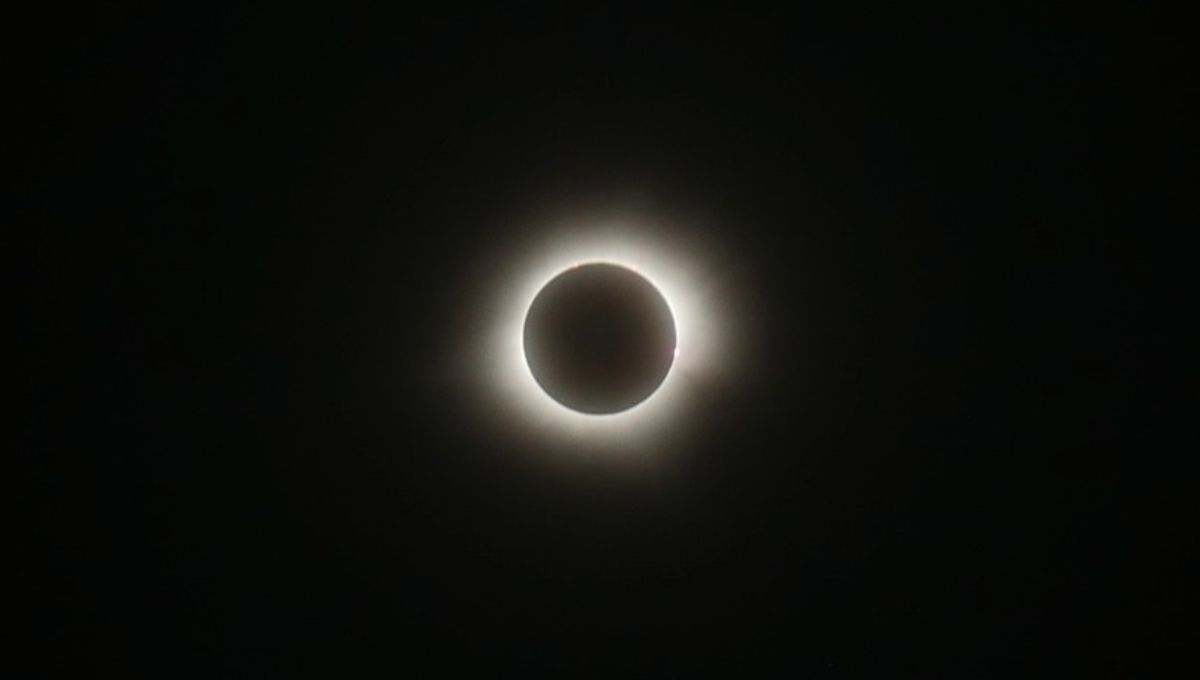
Total solar eclipses like the one that crossed North America this year are not just incredibly beautiful spectacles, they are scientifically valuable too. They allow us to study the solar corona (the outermost part of the Sun’s atmosphere) in important ways. However, due to the alignments of the Sun, Earth, and Moon, despite being regular, they are not always easy to access – so researchers are developing a spacecraft that will make its own eclipses.
The Moon-Enabled Solar Occultation Mission (MESOM) will fly on a trajectory that will allow it to experience total eclipses every lunar month, rather than once every 18 months. On Earth, totality lasts between 10 seconds and 7.5 minutes. MESOM be able to see eclipses as long as 48 minutes, although as the mission progresses they will have to be shorter.
“MESOM takes advantage of the Moon being a perfect natural occulter for the Sun, when viewed from the distance that the Earth is when the Sun-Moon-Earth all line up. Using a spacecraft, means that in principle you can orbit the Earth-Moon barycentre at the necessary distance and then pass through the shadow cast by the Moon once per month – seeing total eclipses during this time,” Professor Lucie Green from University College London, who is working on the MESOM mission, told IFLScience.
The solar corona is extremely hot, much hotter than the surface of the Sun. The reason why is not fully understood, but we are getting closer. This is one of the many reasons why it is important to study the corona: During an eclipse, visible light from the surface is scattered by the corona, creating the pattern we see during eclipses.
Several observatories use coronagraphs to create “eclipses”. They are extremely useful to continuously monitor the Sun, but they do have some drawbacks.
“In a more ‘traditional’ coronagraph you can end up with a bright rim in the part of the image is that around the edge of the occulting disc. This effect is caused by vignetting and diffraction of light entering the telescope. To improve the image on the sections nearest the occulting disc – you must put your occulting disc as far away from the entrance aperture of your telescope as possible,” Professor Green explained.
The future Proba-3 mission will demonstrate spacecraft traveling in formation and have the coronagraph on another spacecraft. Still, the Moon is an excellent coronagraph as it is roughly the same apparent size as the Sun – and it is there!
“By using the Moon, and not a coronagraph, we have a vast distance between our telescope and the object that is blocking the Sun i.e. the distance between the spacecraft and the Moon. This distance greatly reduces unwanted optical effects and improves the quality of the data.”
The team is now looking into the feasibility of the mission with the goal of launching it in the early 2030s. All images collected by the mission will be publicly available, so everyone will be able to engage with the solar eclipses the spacecraft witnesses.
“This is a remarkable mission. I have huge respect for the team at Surrey University (and before that Surrey Satellites LTD) who have taken on the challenge of designing an orbit that can cope with the gravitational fields of the Sun, Moon and Earth that the spacecraft will experience. This is a complex and dynamic system! Thrusters will needed to be used to ensure the spacecraft keeps on the right track,”
“But all the effort will be worth it as we’ll be rewarded with a spectacular view of the solar corona – the best we have ever had. I am sure these images will inspire us – regardless of whether you are a solar scientist or not – and we will make them freely available for everyone to see and use. Total solar eclipses have inspired humans for millennia and we want to build on that long tradition.”
The MESOM feasibility study is funded by the UK Space Agency and will last for one year.
Source Link: Proposed Spacecraft To Chase Moon's Shadow To See One Eclipse Per Lunar Month